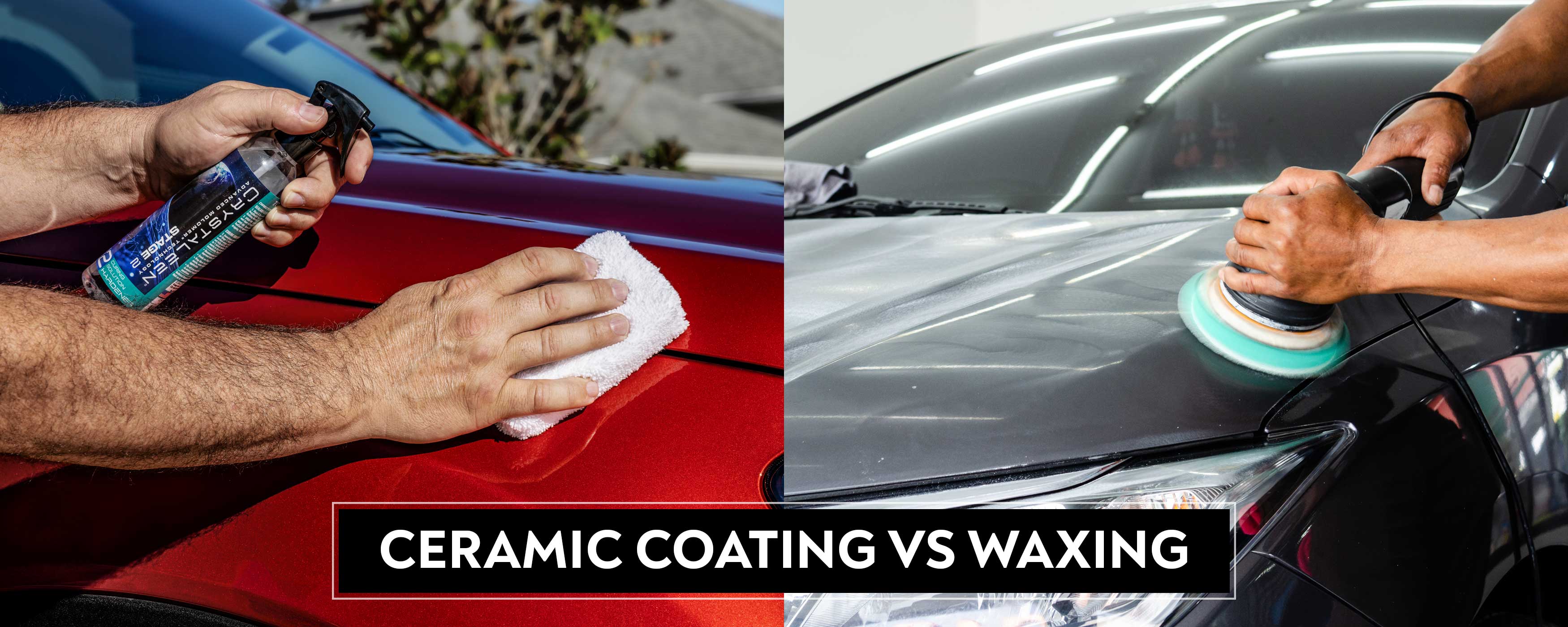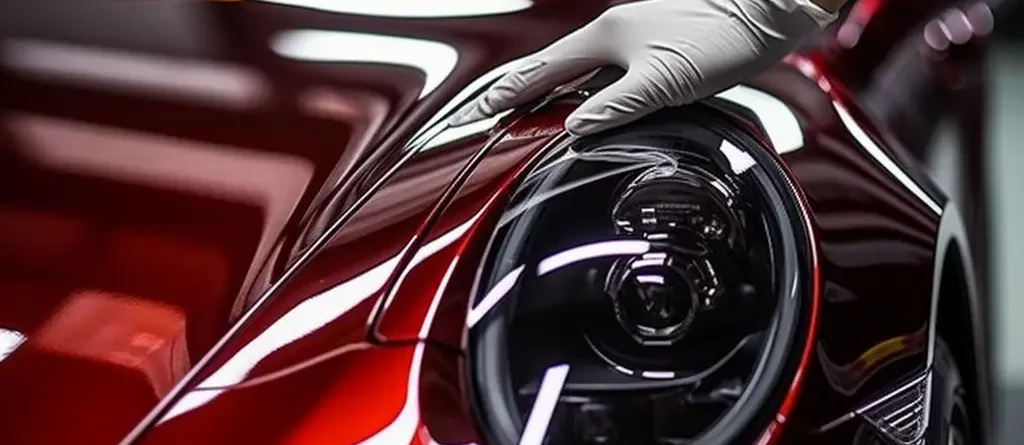Ceramic Layer vs. Conventional Wax: Which Gives Much Better Long-Term Protection?
The debate between ceramic layers and conventional wax for automobile defense has gathered considerable interest among auto fanatics and specialists alike. While both satisfy of securing paint, their distinctions in longevity, application, and long-term maintenance costs might influence a customer's choice. Ceramic coverings boast exceptional longevity and resistance to environmental elements, yet the complexity of their application increases questions regarding access and functionality. As we check out these contrasting options, it ends up being important to take into consideration not just the immediate benefits however likewise the ramifications for car treatment gradually.
Overview of Ceramic Coating
Ceramic coating has actually gained considerable appeal among auto enthusiasts and detailers alike as a result of its advanced safety high qualities. This cutting-edge technology is made to develop a resilient, hydrophobic guard over a car's paint surface, significantly improving its resistance to ecological contaminants such as dirt, UV rays, and chemical discolorations. Unlike conventional wax, which gives a temporary layer of protection, ceramic coatings bond at a molecular level with the paint, supplying long-lasting resilience-- frequently prolonging past two years with proper maintenance.
The application procedure involves careful preparation of the car's surface area, consisting of cleansing and polishing to guarantee optimum attachment. Once used, the coating remedies to develop a durable layer that not only adds deepness and gloss to the paint but additionally simplifies maintenance. With its hydrophobic residential properties, ceramic finishing permits water and dust to slide off more conveniently, decreasing the frequency of laundries and lessening the danger of swirl marks.
Furthermore, ceramic finishes are readily available in numerous formulations, allowing users to pick items customized to their details demands and choices. Generally, ceramic coating stands for a significant advancement in paint protection innovation, providing exceptional performance contrasted to conventional options.
Overview of Traditional Wax
Commonly considered a staple in automotive treatment, wax offers as a prominent selection for those looking for a simple approach to enhance and safeguard their lorry's paint - ceramic coating. Automotive wax typically consists of natural ingredients, such as carnauba, or artificial compounds, created to develop a safety layer externally of the paint. This layer not only improves the vehicle's gloss and beam but also supplies a barrier versus ecological contaminants
The application of wax is typically easy to use, making it obtainable for both experts and do it yourself fanatics. It can be applied by hand or maker, permitting convenience in the outlining procedure. When applied, wax requires a treating period, after which it sets to form a protective covering. Wax is likewise recognized for its capacity to ward off water, advertising a beading effect that helps in the prevention of water places and rust.
Nevertheless, while wax is efficient for improving the visual allure of an automobile, it is necessary to note that the defense it supplies might demand a lot more regular reapplication compared to alternative items, such as ceramic coverings. In general, conventional wax stays a popular alternative for those focusing on convenience of usage and instant visual enhancement.
Toughness and Longevity Comparison
While both ceramic finishes and typical wax deal safety advantages for automobile paint, their toughness and longevity vary considerably. Conventional wax, typically made from natural carnauba or artificial polymers, generally provides a safety layer that lasts roughly three to six months. This relatively brief life expectancy necessitates routine reapplication to keep ideal protection.
In contrast, ceramic coatings are crafted from advanced nanotechnology, developing a covalent bond with the paint surface area. This leads to a robust, hydrophobic layer that can endure for 2 to five years, depending upon the item and environmental conditions. The exceptional toughness of ceramic finishings is credited to their chemical structure, which supplies enhanced resistance to scratches, moved here UV rays, and my link oxidation.

Security Against Environmental Aspects
Protecting a lorry's paint from ecological variables is essential for keeping its appearance and value gradually. Vehicles are constantly subjected to a range of elements, including UV rays, bird droppings, tree sap, acid rain, and roadway gunk, every one of which can endanger the integrity of the paintwork.
Ceramic coatings offer a durable defense against these ecological assailants. Unlike conventional wax, which can deteriorate promptly under UV direct exposure, ceramic finishings create a resilient, hydrophobic layer that resists the hazardous results of sunlight and ecological pollutants. This innovative technology develops a chemical bond with the lorry's surface area, using premium protection that lasts for several years, also in extreme problems.
In contrast, ceramic coatings maintain their safety top qualities much longer, substantially minimizing the risk of paint damage and ensuring that the lorry keeps its visual appeal. As a result, ceramic finishings are progressively recognized as the remarkable option for long-lasting security against ecological aspects.
Application and Upkeep Differences
The approaches of application and subsequent maintenance for ceramic coatings and traditional wax vary significantly, influencing the total customer experience and effectiveness of each item. Ceramic coverings call for an even more detailed application process, generally entailing surface prep work that consists of cleaning, decontaminating, and brightening the automobile. When the surface area prepares, the ceramic finishing is applied in a regulated atmosphere, commonly needing professional know-how to make sure appropriate curing and bonding to the paint.

While both products enhance automobile appearance, the longer-lasting protection offered by ceramic finishings may validate their first financial investment, despite the even more demanding application process. Alternatively, typical wax stays a preferred choice for those seeking an easier, albeit temporary, solution.

Conclusion
Finally, ceramic layers show considerable benefits over typical wax in terms of sturdiness and environmental management. With a life expectancy prolonging two to 5 years and premium resistance to UV rays, dust, and chemical spots, ceramic coverings offer a more reliable option for long-lasting lorry maintenance. Although the application process might need specialist expertise, the resulting cost savings and reduced frequency of reapplication emphasize the worth of ceramic finishes for those looking for ideal car protection.
The argument between ceramic finishes and conventional wax for lorry security has amassed considerable attention amongst automobile fanatics and experts alike. Unlike conventional wax, which provides a short-lived layer of security, ceramic coatings bond at a molecular degree with the paint, providing resilient toughness-- typically prolonging beyond two years with proper upkeep.
While both ceramic coverings and standard wax offer safety benefits for vehicle paint, their resilience and durability differ dramatically. For vehicle fanatics seeking long-lasting protection, ceramic layers provide an engaging benefit over conventional wax products.
In final thought, ceramic layers demonstrate considerable benefits over traditional wax in terms of longevity and environmental protection.
Comments on “Is Ceramic Coating Worth the Investment for Your Car’s Exterior?”